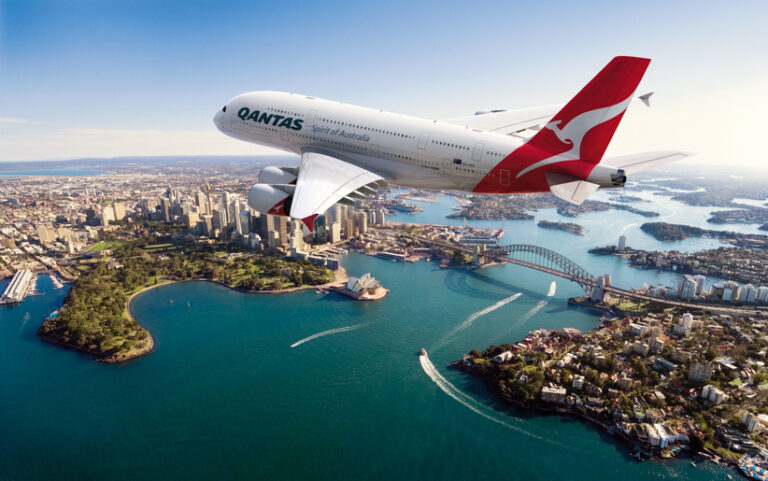On Thursday, Qantas announced a series of changes that are aimed at making Frequent Flyer Award seats more accessible. They have also announced a change in the balance of the award charts. People seeking Economy seats will find a lower points requirement. On the other hand, Premium Cabin awards will come at an increased points cost.
The changes generally follow the following themes:
- Greater availability of Award flights
- Reduced Carrier Surcharges on most international Award Flights
- Increased points requirements for Premium Economy, Business and First Award Flights
- Decreased points requirements for Economy Award Flights
The full suite of changes will kick in from 18 September – especially those that are negative for the customer. On the other hand, Qantas have already introduced some of the changes that are in the customers favour.
Greater availability of Award flights
Qantas will be offering more than a million extra reward seats annually on Qantas and a growing list of premium partner airlines. This is said to include availability during peak leisure travel periods to our most popular destinations such as London, Los Angeles, Tokyo and Singapore.
Overall, Qantas says that there will be a 30 per cent increase in our highest demand reward seats in Qantas International premium cabins over the next 12 months.
Reduced Carrier Surcharges
You know how these work. You find yourself an Award Flight, only to discover there is a sizeable cash payment required. This is in addition to the points you need to redeem. Even worse, on some redemptions, you can find the co-payment is more than you could just buy a flight for.
While these co-payments have some genuine taxes and charges, usually the largest component is what Qantas call a ‘Carrier Charge’. These used to go under the name of ‘Fuel Surcharges’, introduces when fuel prices were going up, but never really went away when fuel prices came down.
Qantas are now promising to reduce Carrier Surcharges on most international routes by up to 50%. There are some exceptions – mostly to New Zealand and some South Pacific islands.
For Economy, the Carrier Surcharge reduction has already kicked in. If you are looking at an Award in a premium cabin, you will need to wait until 18 September for the reductions to occur. This is the same day as the number of points required increases.
Qantas quote the following examples:
- A return Classic Reward flight from Sydney or Melbourne to London will see carrier charges reduced from $1080 to $700 in business
- A return economy flight from Sydney to New York will see carrier charges reduced from $360 to $180.
Increases Points Required for Premium Cabins Awards
Qantas are increasing the number of points required for an award flight in the premium cabins. There is also an increase coming through for Upgrade awards.
These increases are occurring across both the International and Domestic networks. The following table shows the effect on the first three zones, which cover the range of Domestic flights.
| Cabin class / route length
(Qantas Points Required) |
Premium Economy | Business | ||
|---|---|---|---|---|
| Until 17-Sep | From 18-Sep | Until 17-Sep | From 18-Sep | |
| Zone 1 (0-600 miles) (e.g. Sydney to Melbourne) |
12,000 | 13,800 | 16,000 | 18,400 |
| Zone 2 (601-1,200 miles) (e.g. Brisbane to Melbourne) |
18,000 | 20,600 | 24,000 | 27,600 |
| Zone 3 (1,201-2,400 miles) (e.g. Perth to Melbourne) |
27,000 | 31,000 | 36,000 | 41,500 |
That’s for a straight out award, but Upgrade Awards will also increase.
Decreased Points Required for Economy Cabins Awards
On the other side are decreases in point requirements for Economy cabin awards. These primarily affect awards on international flights. For the 3 zones that encompass domestic flights, there is no change. This also means that a range of awards between Australia and New Zealand and some other South Pacific islands are not changing.
Qantas state that the number of points will fall by up to 10%. This can be seen in some of the mid haul routes, although longer routes see a lower percentage reduction.
These reductions came into effect on 20 June 2019.
| Zone | Miles | Previous | From 20-June | Change |
|---|---|---|---|---|
| 1 | 0 – 600 | 8,000 | 8,000 | – |
| 2 | 601 – 1,200 | 12,000 | 12,000 | – |
| 3 | 1,201 – 2,400 | 18,000 | 18,000 | – |
| 4 | 2,401 – 3,600 | 22,500 | 20,300 | -9.8% |
| 5 | 3,601 – 4,800 | 28,000 | 25,200 | -10% |
| 6 | 4,801 – 5,800 | 35,000 | 31,500 | -10% |
| 7 | 5,801 – 7,000 | 40,000 | 37,600 | -6% |
| 8 | 7,001 – 8,400 | 45,000 | 41,900 | -6.9% |
| 9 | 8,401 – 9,600 | 55,000 | 51,200 | -6.9% |
| 10 | 9,601 – 15,000 | 60,000 | 55,200 | -8% |
These are a fairly wide range of changes. Given the changes a number of other airlines have made recently, they were not that unexpected. Fortunately, Qantas has resisted the temptation to follow some airlines into a dynamic pricing model.


